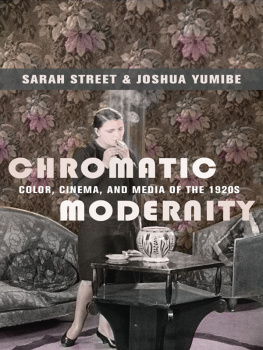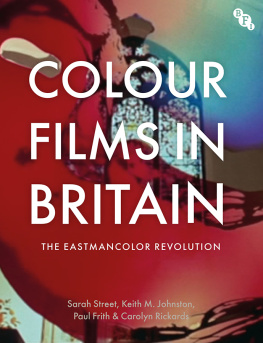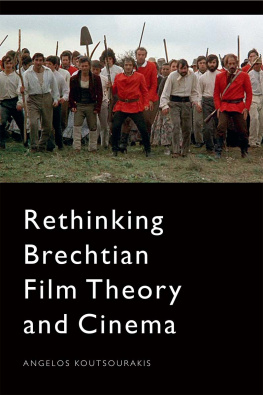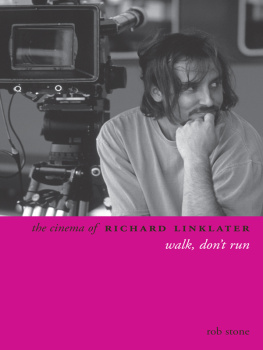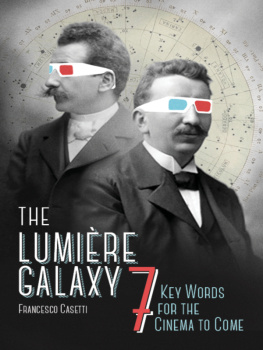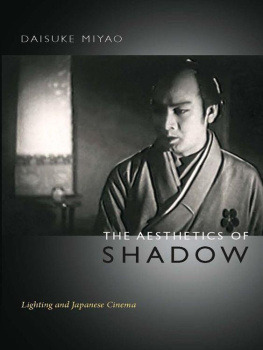Table of Contents
CHROMATIC MODERNITY
FILM AND CULTURE SERIES
FILM AND CULTURE
A series of Columbia University Press
Edited by John Belton
For the complete list of books in this series, see
CHROMATIC MODERNITY
Color, Cinema, and Media of the 1920s
SARAH STREET AND JOSHUA YUMIBE
Columbia University Press
New York
Columbia University Press
Publishers Since 1893
New York Chichester, West Sussex
cup.columbia.edu
Copyright 2019 Columbia University Press
All rights reserved
E-ISBN 978-0-231-54228-9
Library of Congress Cataloging-in-Publication Data
Names: Street, Sarah, author. | Yumibe, Joshua, 1974 author.
Title: Chromatic modernity: color, cinema, and media of the 1920s / Sarah Street and Joshua Yumibe.
Description: New York: Columbia University Press, [2019] | Series: Film and culture | Includes bibliographical references and index.
Identifiers: LCCN 2018041851 (print) | LCCN 2018051303 (e-book) | ISBN 9780231542289 (e-book) | ISBN 9780231179829 (cloth: alk. paper) | ISBN 9780231179836 (paperback: alk. paper) | ISBN 9780231542289 (e-book)
Subjects: LCSH: Color motion picturesHistory. | Color in advertisingHistory.
Classification: LCC PN1995.9.C546 (e-book) | LCC PN1995.9.C546 S769 2019 (print) | DDC 791.4301dc23
LC record available at https://lccn.loc.gov/2018041851
A Columbia University Press E-book.
CUP would be pleased to hear about your reading experience with this e-book at .
Cover image: Frame enlargement from Le home moderne (France, Path Cinema, 1929). Courtesy of the Gaumont Path Archives.
Cover design: Chang Jae Lee
For Sue, Juliet, and Livia, who have been lovingly supportive during the life of this project and through our lives together
Objects, lights, the colors that used to be fixed and restrained have become alive and mobile.
Fernand Lger (1924)
CONTENTS
Color Plates
T his work in many ways dates back to the symposium The Sense of Colour organized by Stephen Barber and Carrie Tarr through Kingston University, UK, in 2005. Struck then by the color bug, we have been close friends and collaborators ever since. We each published our initial monographs on color and film in 2012Joshuas Moving Color: Early Film, Mass Culture, Modernism and Sarahs Colour Films in Britain: The Negotiation of Innovation 19001955yet even as these came out, we were already questioning what else we could say about color in silent cinema. It was clear to us at the outset of what has become this book that much more needed to be examined about the 1920s and the transnational and intermedial flows of color film and media. It was also clear that this should also be a collaborative project, given the necessary scope of such an undertaking. Thankfully, we have had generous support in this, from the Leverhulme Trust, UK, through a Research Project Grant that enabled us to conduct the project Colour in the 1920s: Cinema and its Intermedial Contexts. This also allowed us to collaborate with two exceptional postdoctoral researchers, Victoria Jackson and Bregt Lameris, who worked indefatigably with us in researching the many diverse sources required for this study in archives and libraries in France, Germany, Italy, the Netherlands, the United Kingdom, and the United States. As part of this work, we co-organized a conference in 2015 with the EYE Filmmuseum to celebrate twenty years since the groundbreaking Amsterdam Workshop Colours in Silent Film, and we have been delighted to co-edit as a team The Colour Fantastic: Chromatic Worlds of Silent Cinema (2018) along with our remarkable colleagues Giovanna Fossati and Elif Rongen-Kaynaki, as a record of the conference and the many advances that have taken place in color cinema research since 1995. We were also fortunate to cocurate a series on color film with James Layton and David Pierce for Le Giornate del Cinema Muto, Pordenone, in 2014, another event that brought us into contact with many scholars, archivists, and artists working with silent color film.
We have enjoyed exchanges with numerous other scholars, archivists, and dear friends. This includes foremost our projects brilliant advisory boardIan Christie, Frank Gray, Luke McKernan, and Lynda Neadwho offered excellent advice as our research progressed. We have also benefited immensely from exchanging ideas and materials with numerous friends and colleagues, including Richard Abel, Giaime Alonge, Thomas Beard, David Bering-Porter, Regina Lee Blaszczyk, Kevin Brownlow, Robert Burgoyne, Paolo Cherchi Usai, Michael Cowan, Scott Curtis, Bryony Dixon, Kirsty Sinclair Dootson, Franois Ede, Ken Eisenstein, Sonia Genaitay, Giovanna Fossati, Nicholas Gaskill, Elena Gipponi, Lyn Goeringer, Tom Gunning, Ed Halter, Kenneth Harrow, Jan-Christopher Horak, Yelena Kalinsky, Sarah Keller, Anthony LAbbate, Nicolas Le Guern, Esther Leslie, Jodie Mack, Kristin Mahoney, Nick Marshall, Luci Marzola, Maria Federica Mazzocchi, Ellen McCallum, Mihaela Mihailova, Alexandra Navratil, Patrick ODonnell, Federico Pierotti, Murray Pomerance, Tom Rice, Elif Rongen-Kaynaki, Swarnavel Eswaran Pillai, Jonathon Rosen, Ulrich Ruedel, Cline Ruivo, Matthew Solomon, Jack Theakston, Elizabeth Watkins, Kieron Webb, Anke Wilkening, Tami Williams, Lily Woodruff, Jeffrey Wray, Josh Wucher, Paul Young, and Gregory Zinman.
We are extremely grateful to Barbara Flueckiger, her collaborators, and the Timeline of Historical Film Colors for generous criticism and assistance with a number of frame enlargements. We are also indebted to Serge Bromberg, Guy Edmunds, Cindy Keefer, Sophia Lorent, Laurent Mannoni, Stphanie Salmon, and George Willeman, as well as the staff of the numerous archives listed in our credits, for further assistance with illustrations and research queries.
We are very grateful to Scott Higgins, James Layton, Kirsten Moana Thompson, and other anonymous readers for excellent feedback while reviewing the manuscript with such care. We also benefited immensely from the detailed suggestions from our wondrous friends Kaveh Askari and Justus Nieland, who read numerous sections of the manuscript. Lastly, we thank our editors, John Belton and Philip Leventhal, whose support and enthusiasm for the project have been a tremendous help and encouragement throughout the process. Their careful shepherding of the manuscript from start to finish has been invaluable, as has their understanding of the projects aims and contexts.
We are indebted to the various institutions that invited us to present papers on aspects of our research, including the Society for Cinema and Media Studies (Boston, 2012, and Seattle, 2014). Joshua would like to thank the Screen Studies Conference, Light Industry, the Fondation Jrme Seydoux-Path, the Orphans Film Symposium, Kalamazoo College, IULM University of Milan, and the Universities of Florence, Michigan, and Zurich. Sarah would like to thank the Barber Institute for Fine Arts, University of Birmingham; the Institute for Historical Research, University of London; Kings College, London; and the Universities of Leeds, Liverpool, Oxford, Reading, and Zurich.

